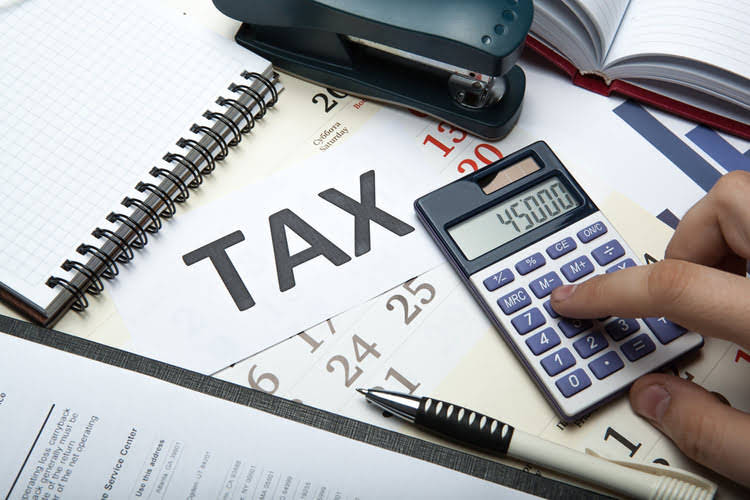
If you have two or more successive leases that are part of the same transaction (or a series of related transactions) for the same or substantially similar property, treat them as one lease. Whether the use of listed property is for your employer’s convenience must be determined from all the facts. The use is for your employer’s convenience if it is for a substantial business reason of the employer. The use of listed property during your regular working hours to carry on your employer’s business is generally for the employer’s convenience.
Topic no. 704, Depreciation

If you depreciate your property under MACRS, you may also have to reduce your basis by certain deductions and credits with respect to the property. For more information, see What Is the Basis for Depreciation? The adjusted basis in the house when Nia changed its use was $178,000 ($160,000 + $20,000 − $2,000). On the same date, the property had an FMV of $180,000, of which $15,000 was for the land and $165,000 was for the house.
First-year expensing – Section 179 deduction
The IRS’s commitment to LEP taxpayers is part of a multi-year timeline that began providing translations depreciable assets list in 2023. You will continue to receive communications, including notices and letters, in English until they are translated to your preferred language. This tool lets your tax professional submit an authorization request to access your individual taxpayer IRS online account. Go to IRS.gov/Account to securely access information about your federal tax account.
- Assets are depreciated to calculate the recovery cost that is incurred on fixed assets over their useful life.
- You must allocate the dollar limit (after any reduction) between you equally, unless you both elect a different allocation.
- In this example, we can say that the service given by the weighing machine in its first year of life was $200 ($1,000 – $800) to the company.
- The bonus percentage now decreases by 20 points each year for property placed in service after Dec. 31, 2022, and before Jan. 1, 2027, unless the law changes.
Causes of Depreciation
The participations and residuals must relate to income to be derived from the property before the end of the 10th tax year after the property is placed in service. For this purpose, participations and residuals are defined as costs, which by contract vary with the amount of income earned in connection with the property. A depreciable asset is an asset used by businesses to generate income for more than a year and slowly decreases in value over time. Such an asset is eligible for depreciation treatment per tax laws aligned with the IRS or Internal Revenue Service rules. Its purpose is to provide a company with a long-term productive asset while allowing for the cost to be spread out over its useful life.
- Work with your accountant to be sure you’re recording the correct depreciation for your tax return.
- To account for this, we list some of its consumption as an expense on the company’s balance sheet each year.
- The land improvements have a 20-year class life and a 15-year recovery period for GDS.
- In chapter 4 for the class lives or the recovery periods for GDS and ADS for the following.
- You figured your deduction using the percentages in Table A-1 for 7-year property.
Why Are Assets Depreciated Over Time?

You can choose to use the income forecast method instead of the straight line method to depreciate the following depreciable intangibles. To determine whether a person directly or indirectly owns any of the outstanding stock of a corporation or an interest in a partnership, apply the following rules. You may not be able to use MACRS for property you acquired and placed in service after 1986 if any of the situations described below apply. If you cannot use MACRS, the property must be depreciated under the methods discussed in Pub. In chapter 4 for the rules that apply when you dispose of that property..
You figure depreciation for all other years (including the year you switch from the declining balance method to the straight line method) as follows. If there are no adjustments to the basis of the property other than depreciation, your depreciation deduction for each subsequent year of the recovery period will be as follows. You begin to claim depreciation when your property is placed in service for either use in a trade or business or the production of income. The placed in service date for your property is the date the property https://www.bookstime.com/ is ready and available for a specific use. If you converted property held for personal use to use in a trade or business or for the production of income, treat the property as being placed in service on the conversion date.

Tax depreciation and state-level complexities
Section 179 is also an immediate expense deduction, similar to bonus depreciation. In the coming years, as bonus depreciation phases out, some taxpayers may be able to maintain some initial-year expensing through section 179 rules. While certain land improvements and buildings may be depreciated (such as rental property), land is not depreciable. Of course, if all of this talk of tables and conventions seems a little overwhelming, you can always use tax preparation software to run all of the numbers for you.
Claiming the Special Depreciation Allowance
You do not use the item of listed property predominantly for qualified business use. Therefore, you cannot elect a section 179 deduction or claim a special depreciation allowance for the item of listed property. You must depreciate it using the straight line method over the ADS recovery period. On December 2, 2020, you placed in service an item of 5-year property costing $10,000. You did not claim a https://www.instagram.com/bookstime_inc section 179 deduction and the property does not qualify for a special depreciation allowance.
For 15-year property depreciated using the 150% declining balance method, divide 1.50 (150%) by 15 to get 0.10, or a 10% declining balance rate. You own a rental home that you have been renting out since 1981. If you put an addition on the home and place the addition in service this year, you would use MACRS to figure your depreciation deduction for the addition. The Modified Accelerated Cost Recovery System (MACRS) is used to recover the basis of most business and investment property placed in service after 1986.


